For the last several months, I’ve been participating in a challenge to walk a hundred kilometres in a month, alongside two of my siblings, and a bunch of our childhood friends. This month, the online group in which we report our progress and egg each other on, is called “100 km in Crazy December…We Got This!!”—a nod to the way December seems to zip by in a cloud of twinkle lights and shortbread cookies, with one’s best intentions scattered like so much shredded wrapping paper after a gift-exchange frenzy. Without that kind of external motivation and accountability, I know it’s easy for me to forget I live in a body at all. My month is shaping up to include lots of time at my desk (book rewrites are coming my way this week, plus there’s the work I do here at Propriometrics Press and on Katy Says, the bi-weekly podcast from our author Katy Bowman), lots of time at my sewing machine (making Christmas presents for family and friends, and yes, for myself!), and lots of time in the car (my husband and I drive eighteen hours to see my family at Christmas).
All of this, plus the usual hustle and bustle of the season, could set me up for a stressed out, sedentary month. But I’ve been thinking about the hashtag we use on social media: #practicewhatyoupublish, and I’ve asked some of our authors to share with me—and with you—their best tips. We hope you’ll find some inspiration for your own life here!
Galina Denzel, the co-author of Eat Well, Move Well, Live Well, writes about meditation in that book’s chapter “Meditate on This.” But, she notes, “sitting meditation comes easier in those times when I have relative peace, life is in flow and I am not facing huge challenges. But with the holidays, there is more stress, more expenses, more travel, more preparations in our home. On top of it, we have a special holiday program, and our students need our attention, so technically, we put a lot on our plates.” So here’s how Galina embodies #practicewhatyoupublish:
While our life is rich with many amazing holiday experiences, it becomes harder to wake up and pull my cushion, sit and just drop into what’s in my body. And herein lies the paradox: the times when I most need to attend to my inner world is the time when I am least wanting to do it, because…there is stuff to do. Around this time of year I choose to do walking meditations instead of sitting meditations. It’s a way for me to combine two of my favorite ways to stay connected with myself at a time when walking comes easier than sitting. This way my walk to the store can become an opportunity to drop in and be with myself and attend to emotions, thoughts, sensations, connections that are tugging at my heart. I can do it on my way to or from work. I can do it while walking with my partner.
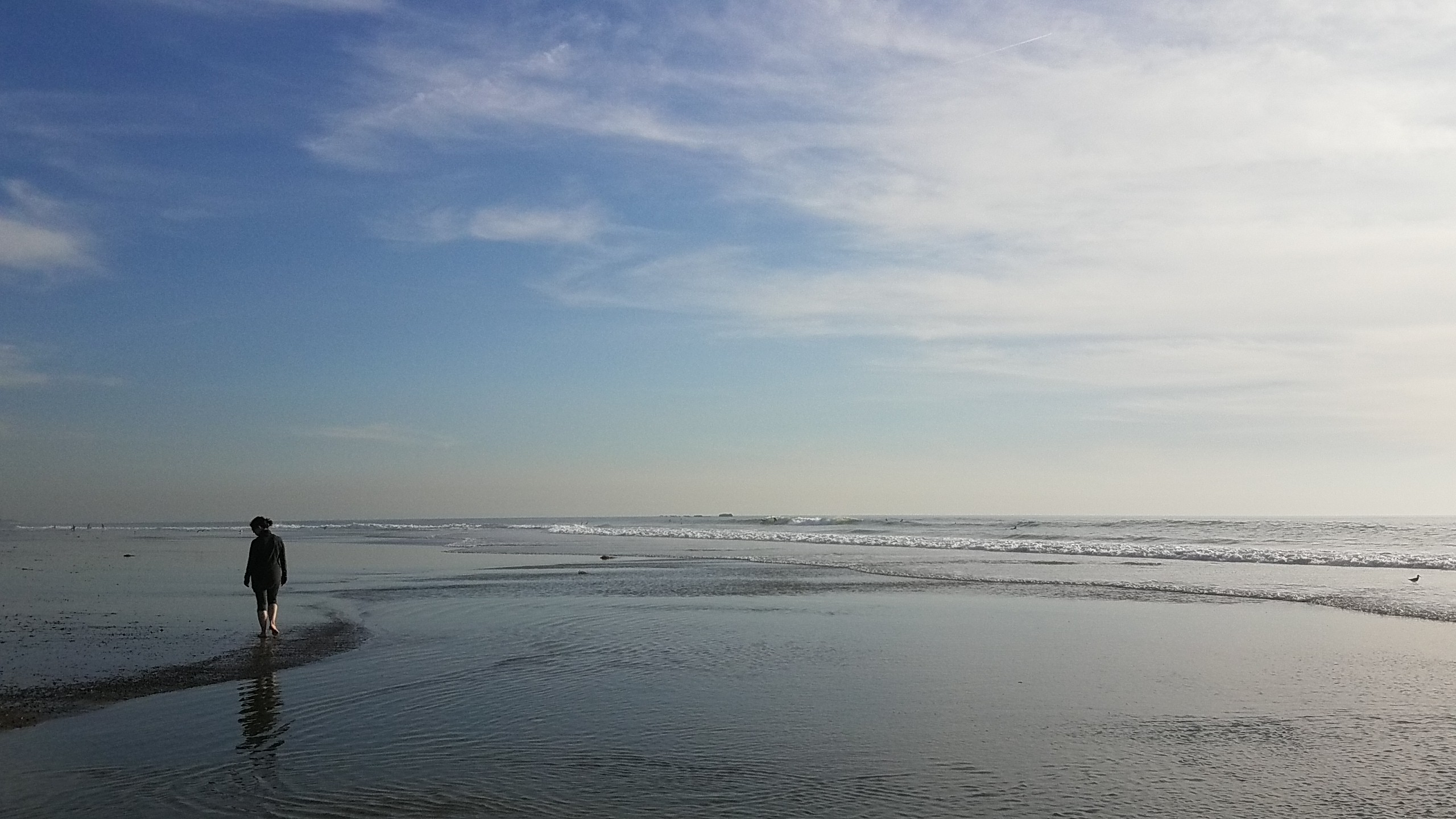 I usually choose one of three anchors for my walks. On some walks, I choose to attend to my breath, as I walk and become aware of certain thoughts, events, sensations, emotions or connections, I keep my awareness on my breath. This way I have a line connecting my attention to my breath and my whole experience organizes around it. A second anchor may be the ground. As I walk, I feel my contact with the ground—right, left, right, left—aware of the textures under my feet. A third anchor may be the colors around me—as my attention drifts I always come back to the colors and notice here is red, here is yellow. You can choose your own way to organize your walking meditations, and make this idea your own.
I usually choose one of three anchors for my walks. On some walks, I choose to attend to my breath, as I walk and become aware of certain thoughts, events, sensations, emotions or connections, I keep my awareness on my breath. This way I have a line connecting my attention to my breath and my whole experience organizes around it. A second anchor may be the ground. As I walk, I feel my contact with the ground—right, left, right, left—aware of the textures under my feet. A third anchor may be the colors around me—as my attention drifts I always come back to the colors and notice here is red, here is yellow. You can choose your own way to organize your walking meditations, and make this idea your own.
Practicing walking meditation is all about setting the right intention and can really transform how you feel through the holidays. To make it easier, I am sharing one of the walking meditations from our holiday program. Have a listen. (http://eatmovelive52.com/walking-meditation/)
Joan Virginia Allen is a co-author of Dynamic Aging:
During the holiday season, I am in the car a lot. Great opportunity to practice head ramping as explained in Dynamic Aging: Simple Exercises for Whole-Body Mobility. For more information on head ramping, check out our blog entry “As Long as You Breathe, Change is Possible” at www.dynamicaging4life.com.


Doniga Markegard is the author of Dawn Again:
Winter brings time to breathe. Winter brings people together to sit around the fire and talk about the season, talk about our dreams, reflect, and imagine the future. I have been thinking a lot about the future. When you have kids it is hard not to. The changing climate, political system, and the rapid pace of tech growth are all subjects to talk about around the fire. There is something about sitting around the fire with other people that brings about a depth of honest conversation that is difficult to achieve in everyday passing.
I recently had the chance to sit around the fire at Wilderness Awareness School while I was on my book tour in Washington. This was the same fire I wrote about in Dawn Again. That was 20 years ago. It has been burning nearly daily since that time. Each year a new group of youth comes to gather around that fire and talk, cry, dance, dream, and imagine the future.
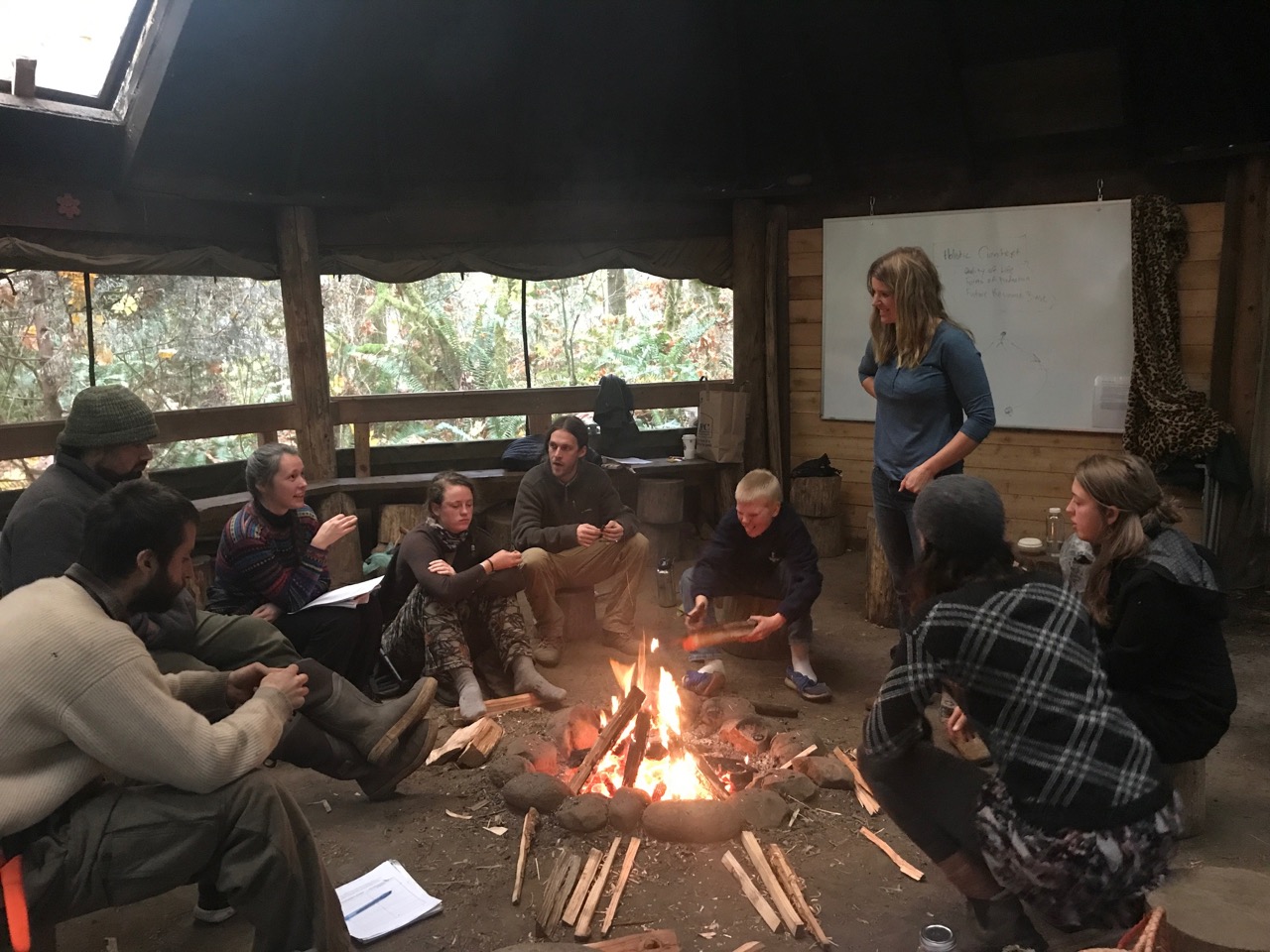
Pictured here, Doniga Markegard and her son Larry teaching Holistic Context-Setting to the Wilderness Awareness School apprentices
Katy Bowman, author of eight books, including Movement Matters:
My books are always about movement—specifically natural movement, transitioning your body to handle more natural movement, and where movement can fit back into your life. When it comes to movement, the holidays can be stressful because with the addition of so many extra “things to do,” the bout of daily exercise is the first to go. For many, it’s the least connected thing to other elements of life and so is the easiest thing to set aside when all the other plans come in.
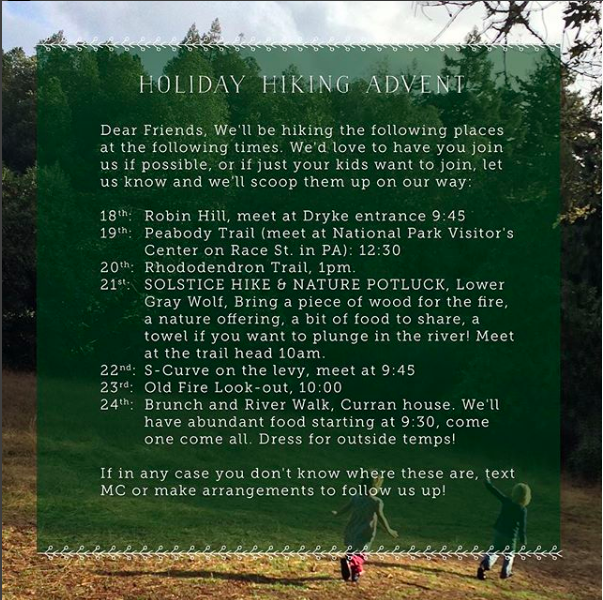
Katy’s Hiking Advent invitation from 2016
The way I #PracticeWhatYouPublish is to, obviously, keep moving. I choose less convenient methods (read lots of things by hand!) of processing raw or foraged ingredients. I also like to celebrate with movement—to infuse the holiday with movement—so that we can move together (yay Vitamin Community!). I create exercise advents for my social media followers, giving them one exercise each day. I send out a “Week Before Christmas Hiking Countdown” letting our friends know where we’ll be hiking and at what time, and that they (or even just their kids) are invited. We hold a holiday-eve brunch for all our friends, often eating outside and then heading out for long walk down a local trail. In short, I’ve worked to make the holidays ABOUT moving. Movement is not only a great way through which to celebrate, movement should be celebrated. Movement is the gift!
Shelah Wilgus is a co-author of Dynamic Aging:
During the holiday season and any other time, I make sure to calf stretch several times a day. I leave a half foam roller in front of my sink in the bathroom. That way I can do a double calf stretch while brushing my teeth or just washing up. Detailed instruction for doing the calf stretch can be found in Dynamic Aging: Simple Exercises for Whole-Body Mobility.

Alison Bernhoft is the author of Entropy Academy: How to Succeed at Homeschooling Even if You Don’t Homeschool:
I have a couple of Entropy-Busting Ideas which helped me keep the chaos at bay, at least as regards Christmas stockings: early in the year, I hung up plastic grocery bags, one per child, on a rail in my closet kept exclusively for that purpose. (It’s a short rail, and we have six kids, in case you were wondering.) As the months passed, the bags filled with odd items that I found on sale, with mementos of some of the trips we had made, maybe a CD from a concert we had particularly enjoyed. Then it was a simple matter to add the traditional English piece of silver money, apple and satsuma in the toe, then fill it up chocolates, brain puzzles, and a giant plastic candy cane filled with M&Ms.
Warning! Once wrapped, small presents become impossible to tell apart! THE ONLY WAY TO FILL STOCKINGS AND STAY SANE is to use different paper for each child, (but the same paper for all that child’s presents.)
And Alison’s daughter Lorna adds:
The distinctive thing we did that comes to mind is extending the season and acknowledging the Magi by exchanging books on January 6, the Epiphany. Strong emphasis on extending the season!
 As for me, I’m excited to apply some of these tips to my December, and I hope you are, too! In my family, we called January 6 Little Christmas, and there was always a special meal, and a small gift for everyone around the table. I loved the way it brought forward the warmth of the season into the new year. From everyone here at Propriometrics Press, may that warmth be your companion long after the last gift is unwrapped and the twinkle lights are packed away.
As for me, I’m excited to apply some of these tips to my December, and I hope you are, too! In my family, we called January 6 Little Christmas, and there was always a special meal, and a small gift for everyone around the table. I loved the way it brought forward the warmth of the season into the new year. From everyone here at Propriometrics Press, may that warmth be your companion long after the last gift is unwrapped and the twinkle lights are packed away.

 From the launch party last fall (entirely unlike any book launch party I’ve ever been to—and as a writer/editor/journalist/publishing person, I’ve been to lots) at which humans and cows hung out together on a beautiful, holistically managed ranch, pitching it to help prepare locally grown and foraged foods and sharing a meal around long tables in a field as the sun set over the Pacific Ocean, to the feedback we’ve heard from readers about the changes they’ve made to render their lives a little less convenient and a little more movement-rich, Movement Matters is the kind of book that easily invites you to take what’s between its covers out for a spin in the world. And that spin has a way of changing the world. Again, it feels like we are creeping dangerously close to the kind of breezy inspirational talk you might find on a motivational poster featuring a couple of unlikely animals cuddled up together, say, a fox and a duck. But really, in order for the world to change, all that has to change is one person. Or the way one person approaches one aspect of their life. Like using a hand-grinder to grind coffee beans. Or doing the back to school shopping at a second hand store. Or walking to the post office instead of driving. Game changers, all three. And absolutely achievable by just about anyone—if not those specific acts, then others just like them.
From the launch party last fall (entirely unlike any book launch party I’ve ever been to—and as a writer/editor/journalist/publishing person, I’ve been to lots) at which humans and cows hung out together on a beautiful, holistically managed ranch, pitching it to help prepare locally grown and foraged foods and sharing a meal around long tables in a field as the sun set over the Pacific Ocean, to the feedback we’ve heard from readers about the changes they’ve made to render their lives a little less convenient and a little more movement-rich, Movement Matters is the kind of book that easily invites you to take what’s between its covers out for a spin in the world. And that spin has a way of changing the world. Again, it feels like we are creeping dangerously close to the kind of breezy inspirational talk you might find on a motivational poster featuring a couple of unlikely animals cuddled up together, say, a fox and a duck. But really, in order for the world to change, all that has to change is one person. Or the way one person approaches one aspect of their life. Like using a hand-grinder to grind coffee beans. Or doing the back to school shopping at a second hand store. Or walking to the post office instead of driving. Game changers, all three. And absolutely achievable by just about anyone—if not those specific acts, then others just like them. So, yeah, here I am wishing a book Happy Birthday. If you haven’t had a chance to acquaint yourself with Movement Matters, there is no time like the present. It’s available in three formats—
So, yeah, here I am wishing a book Happy Birthday. If you haven’t had a chance to acquaint yourself with Movement Matters, there is no time like the present. It’s available in three formats—




 If you’re still looking for a gift for your mom, or for one you know, we’ve sorted some of our recent books into helpful piles for you! Find what you’re looking for at your favorite online or bricks and mortar book retailer, and Happy Mother’s Day to all who mark it!
If you’re still looking for a gift for your mom, or for one you know, we’ve sorted some of our recent books into helpful piles for you! Find what you’re looking for at your favorite online or bricks and mortar book retailer, and Happy Mother’s Day to all who mark it!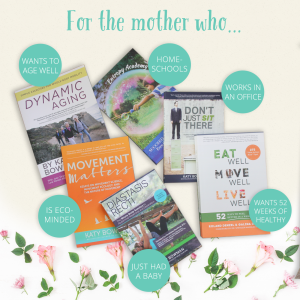
 So, in case you missed it,
So, in case you missed it, 

 Their stories, shared in more detail in the book, are seriously inspiring. (The book will be available in stores and online March 1… but pre-sale copies are available
Their stories, shared in more detail in the book, are seriously inspiring. (The book will be available in stores and online March 1… but pre-sale copies are available 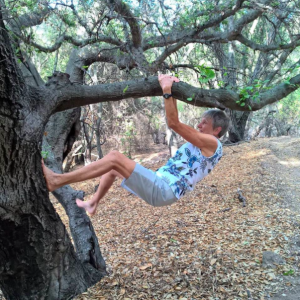

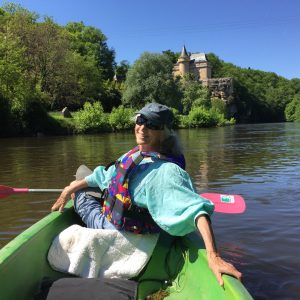
 Joyce will turn 80 this year. She’s had no surgery, has regained her ability to walk without pain or impairment and, as she puts it, lives with wellness in her body, mind, and spirit. “Whole-body movement has made this possible in my life and I feel strong and capable walking the path to healing and wellness.”
Joyce will turn 80 this year. She’s had no surgery, has regained her ability to walk without pain or impairment and, as she puts it, lives with wellness in her body, mind, and spirit. “Whole-body movement has made this possible in my life and I feel strong and capable walking the path to healing and wellness.”

